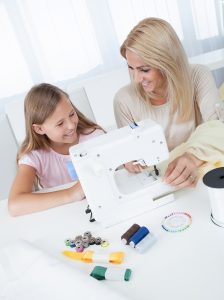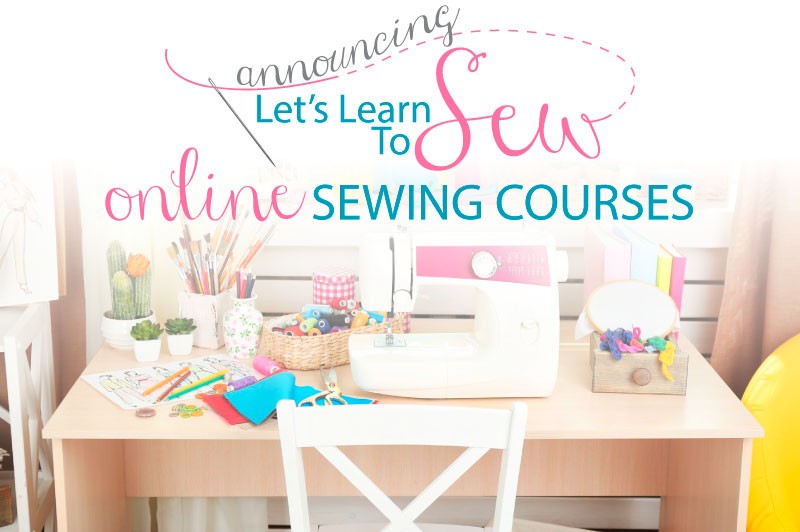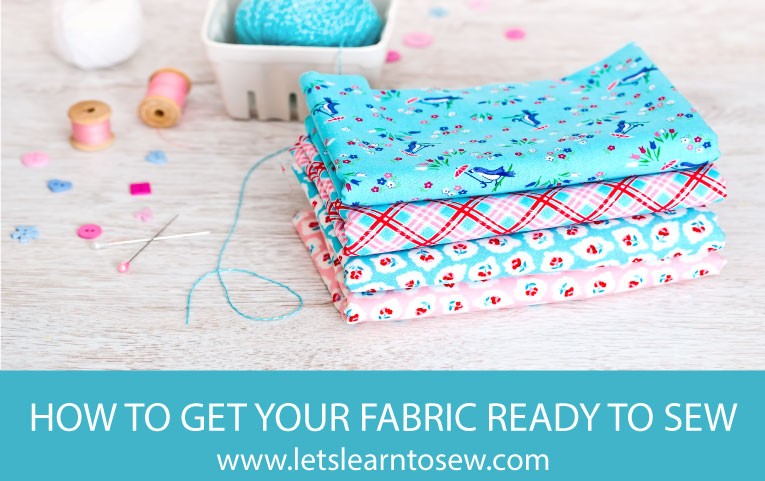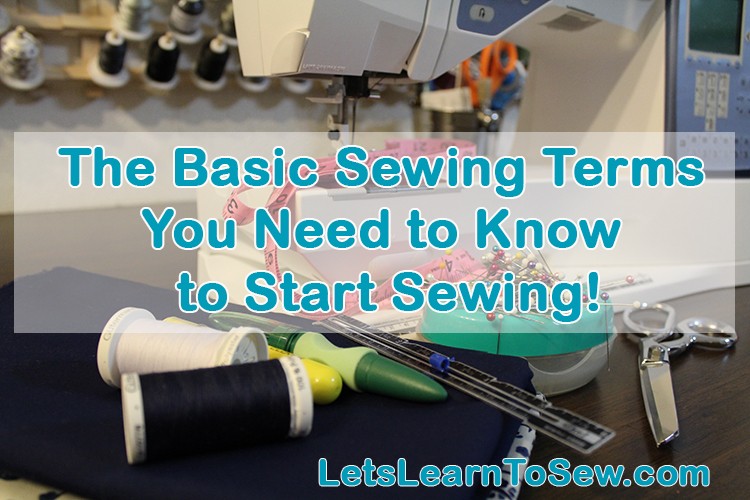When it comes to kids and sewing the first question almost every parent ask is "Is my child is old enough to learn how to sew?" This can be a really hard question to answer because every child is different. Chronological age is the least important factor. Coordination, reading, ability to follow directions and curiosity are much more important.
How to know if your child is ready to learn how to sew
There are three key factors that I look at when deciding of a child is old enough to learn how to sew. Since most people have a set age in mind lets start there.
Age
Very generally speaking, age 7 is about right for starting sewing lessons. There are some 6's who will be ready, and some 8's who won't be. The majority of children who have completed first grade are ready.
7's and 8's really enjoy their sewing lessons and learn rapidly as they progress through each skill. They have an easy time remembering from one week to the next the skills they have learned. They enjoy making and wearing the simple projects they are capable of at the beginning.
9's and 10's move quickly through the lessons. This group tends to be more creative than the younger children after the basics are learned. This age is often sewing up scraps.
For children over 10 having a large variety of projects is important. They quickly absorb everything and want to move on to new skills and feeling challenged.
Reading
The student should be able to read the most basic of early-reader books. Dr. Suess, the Berenstain Bears, and other simple books. If the student has completed the First Grade (or have comparable reading skills), they will have no problem in my Summer Sewing Camp!
You may need to help with pronunciation of sewing-specific words.
Coordination
Shoe-tying: can the student tie their shoes neatly and quickly? The bow should have even size loops; the tails should be mostly even, and the knot should be secure.
Name-writing: can the student write their name in all the same size letters? All letters should be forward facing. Either all caps or the advanced caps/lower form is fine.
Coloring: Can the student follow the lines and keep the colors where s/he wants them? Can the student outline a shape, then color it in?
All of the above signifies the cognitive loop between the eye, the hand, and the brain. This is the stage at which sewing can be learned and remembered. The student is able to see what the hand is doing and make a correction while the task is underway.
Should They be Supervised?
A child who is 8 years of age or older can go without constant supervision but should have an adult nearby if they need help. Of course, you know your child better than anyone. Safety is key.
If you have a child that is ready to learn how to sew I have an online Summer Sewing Camp for Kids! This online summer camp includes videos and printable instructions that will walk your child through everything they need to know to complete each project safely and sew with ease and confidence.











Kyla Matton Osborne
This is a great post for anyone with kids who want to learn how to sew. I think you've done a great job of outlining the skills necessary for sewing safely, and how to know if a child has mastered them.
And I love that you mention each child learning at their own pace. I have kids with learning disabilities & ADHD. For them, pretty much all the gross motor (riding a bike, swimming) and fine motor (crochet, knitting, sewing on a button) activities came much later than for their peers - even though they had the related skills.
Evelyn, PathofPresence
I love this! And have learned so much just from reading it. Delighted to know that sewing classes are now available online. I learned how to sew from my mom. The 3 factors you mentioned are a great gauge to assess readiness. My daughter is almost 5 and I’m already dreaming about projects we can do together. 💕 Xo, Evelyn, PathofPresence.com 🦋